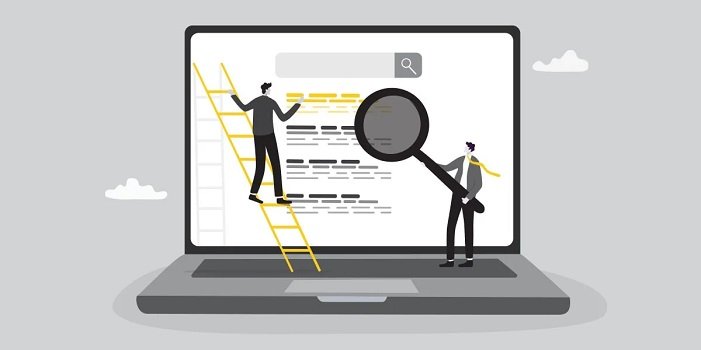SEM Copy Optimisation: A Complete Guide to SEM Copy Optimization for Higher ROI

Search Engine Marketing (SEM) is essential for businesses looking to enhance their online visibility. One of the most critical components of SEM is copy optimization. In this article, I’ll dive deep into SEM copy optimization, discussing its significance, effective techniques, tools to use, and how to measure success. Let’s explore how you can elevate your SEM campaigns with optimized copy.
What is SEM Copy Optimization?
SEM copy optimization is the process of refining your advertising copy to boost its performance in search engine marketing campaigns. It involves crafting engaging text that captures attention, encourages clicks, and drives conversions. Effective copy can enhance your ad’s visibility, relevance, and ultimately improve your return on investment (ROI).
The Importance of Copy in SEM
1. First Impressions Count
Your ad copy is often the first interaction potential customers have with your brand. Compelling copy can create a positive first impression and motivate users to learn more about your offerings.
2. Relevance and Quality Score
Search engines prioritize ads that are relevant to users. Well-optimized copy that aligns with user intent can lead to higher quality scores, which improves ad positioning and lowers costs per click.
3. Emotional Connection
Effective copywriting can resonate emotionally with users, increasing the likelihood of engagement and conversions.
Key Techniques for Effective SEM Copy Optimization
1. Keyword Integration
- Strategic Placement: Place primary keywords in the headline, subheadings, and body of your ad copy. This signals to search engines that your ad is relevant to user searches.
- Use Variations: Include synonyms and related terms to capture a wider audience while maintaining context.
2. Ad Formats and Extensions
- Responsive Search Ads: Input multiple headlines and descriptions to let Google test various combinations for effectiveness.
- Ad Extensions: Utilize extensions such as sitelinks, callouts, and structured snippets to provide additional information and improve visibility without extra ad space.
3. A/B Testing and Iteration
- Test Different Versions: Regularly conduct A/B tests on various elements, including headlines, CTAs, and descriptions, to find what works best.
- Iterate Based on Performance: Analyze performance data and refine your copy accordingly, focusing on elements that lead to higher click-through rates (CTR) and conversion rates.
Best Practices for Crafting SEM Copy
- Clarity is Key: Aim for clear and concise messaging. Avoid jargon and ensure your copy is understandable to a broad audience.
- Emphasize Benefits: Focus on what users will gain from your product or service rather than just listing features.
- Create Urgency: Use phrases like “limited time offer” or “act now” to motivate users to engage with your ad.
- Know Your Audience: Tailor your language and messaging to resonate with your target audience’s needs and preferences.
Tools for SEM Copy Optimization
Here are some helpful tools to assist with your SEM copy optimization:
- Google Ads Keyword Planner: Find relevant keywords and gain insights into search volumes.
- SEMrush: Analyze competitor ads and track keyword performance for strategic adjustments.
- Ahrefs: Conduct thorough keyword research and monitor your copy’s performance over time.
- Unbounce: Create landing pages that align with your ads and enhance user experience.
Measuring Success in SEM Copy Optimization
To evaluate the effectiveness of your SEM copy, keep track of these metrics:
- Click-Through Rate (CTR): This percentage indicates how many users clicked your ad after seeing it. A higher CTR means your copy is engaging.
- Conversion Rate: This measures the percentage of users who take the desired action (like making a purchase) after clicking on your ad, showcasing your copy’s effectiveness.
- Quality Score: A metric used by Google Ads that assesses the relevance of your keywords, ads, and landing pages. A higher score can lead to better positioning and lower costs.
- Cost Per Acquisition (CPA): This average cost of acquiring a customer through your ads indicates how efficiently you’re spending your budget.
Common Challenges in SEM Copy Optimization
- Ad Fatigue: Users may become desensitized to your ads over time, leading to decreased performance. Regularly refreshing your copy can help mitigate this issue.
- Staying Updated with Trends: The digital marketing landscape changes quickly. Keeping abreast of industry trends and consumer behavior is crucial for maintaining effective copy.
- Balancing Creativity and Compliance: While creativity is essential, it’s important to follow platform guidelines and ensure your messaging is truthful and transparent.
Conclusion
SEM copy optimization is a critical process that involves strategic keyword use, compelling writing, and continuous data analysis. By applying the techniques and best practices outlined in this guide, you can create ad copy that not only attracts clicks but also drives conversions. Regular testing and adaptation are key to staying competitive in the fast-paced world of digital marketing.
FAQs
1. What is SEM copy optimization?
SEM copy optimization is the process of improving the text of your search engine marketing ads to enhance their effectiveness. This includes refining headlines, descriptions, and calls to action to drive higher click-through rates (CTR) and conversions.
2. Why is copy optimization crucial for SEM?
Copy optimization is essential because it directly impacts your ad’s performance. Well-crafted copy improves your ad’s relevance, increases quality scores, lowers costs per click, and ultimately leads to better conversion rates.
3. How can I identify the best keywords for my SEM campaigns?
Use tools like Google Keyword Planner, SEMrush, or Ahrefs to conduct keyword research. Focus on relevant keywords with sufficient search volume and consider long-tail keywords for more specific targeting.
4. What are effective strategies for writing compelling ad headlines?
- Incorporate Numbers or Lists: Phrases like “Top 5 Tips for…” tend to attract attention.
- Use Primary Keywords: Including keywords helps improve relevancy.
- Ask Questions: Engaging questions can pique users’ curiosity.
5. What makes a strong call to action (CTA)?
A strong CTA is concise, actionable, and relevant. Examples include “Shop Now,” “Get Your Free Quote,” and “Sign Up Today.” Your CTA should create urgency and prompt immediate action.
6. How frequently should I update my SEM copy?
Regular updates are advisable. Review and refresh your copy at least quarterly or whenever there are changes in your product offerings, market conditions, or performance metrics.
7. What common mistakes should I avoid in SEM copywriting?
- Using vague or generic language.
- Neglecting to include keywords.
- Writing overly long copy that loses focus.
- Forgetting to include a clear and compelling CTA.
8. How can I measure the success of my SEM copy?
Track key performance indicators (KPIs) such as click-through rates (CTR), conversion rates, and cost per acquisition (CPA). These metrics will help you assess the effectiveness of your copy and guide future optimizations.
9. What tools are available for SEM copy optimization?
Useful tools include:
- Google Ads: For insights on keyword performance and ad effectiveness.
- SEMrush: For competitor analysis and keyword tracking.
- Ahrefs: For comprehensive keyword research.
- AdEspresso: For A/B testing and optimization of ad performance.




